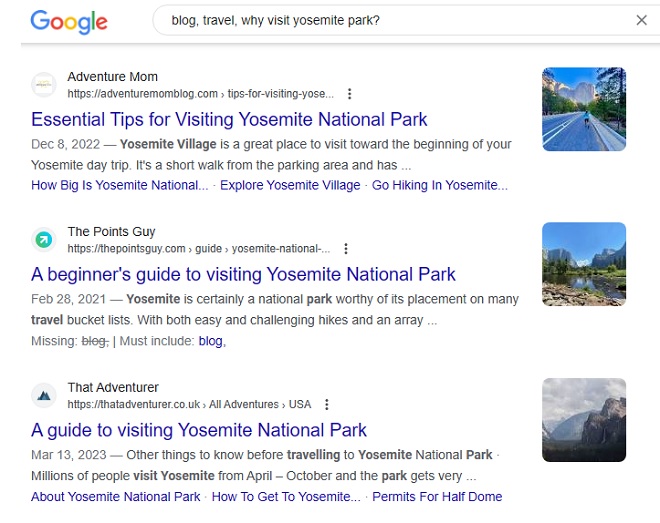Find Content Angles to end Reader’s Suffering
Readers today suffer a lot. They’re bored, confused, and dejected. Everything’s a copy of a copy.
You’ve no doubt suspected, via a quick look at your engagement stats in your analytics app, that your content isn’t making the impact you need. It may not be attracting clicks, grabbing attention, creating engagement, nor generating a lead.
With sales conversion rates below 1%, it seems no one is captivated by what they’re consuming.
Outside the Box Imagination: How do you Get That?
What’s needed is better content, and to create that edge, you must look outside the box. Managers who enable maximum imagination, creativity and freedom for content producers to explore outside the box will win. It’s the only way to create interesting and emotionally compelling views of a topic/product.
In a sense, the creator needs to be free to fully live the customer experience — yes the customer’s experience — to find the angle that’s most emotionally powerful. If you want to sell a vacation to Italy, you must really feel the travellers’ emotional yearning for that experience. The writer needs to travel to Italy to understand the emotional drivers and explore then benefits the country offers.
This is why digital nomads, unchained to a desk outperform in creativity. They’re not only fresher and more vibrant, they’re free to explore topics, people, and solutions. It’s a huge advantage over chained content producers. It frees up tremendous creative powers.
It’s all about exploration, and that’s beyond using ChatGPT or absorbing the same boring newsfeeds every day.
Boring, Common Views of a Product Kill It
Corporations love common and safe. But when your customer prospects see blasé “here’s our stuff” marketing copy they don’t feel excited enough to buy your product or service. Yes, your brand could suck too, but that only means your content has to be even better. It could actually save an awful brand. But you must take chances and explore.
Marketers in general don’t realize how stultified their audience is. We can’t assume customers arrive excited. We have to engineer it ourselves.
CMO’s, CEO’s, investors and entrepreneurs have a problem — bored, disengaged, unsatisfied new customer prospects whom can’t be engaged. That’s a fundamental business problem.
The web has too much content that doesn’t make readers sit up and pay attention. Worse, social media drivel makes interesting things seem trivial. It’s a cancer on engagement and branding. Sure, some products and industries are boring, but we must find an interesting angle so they’re as fascinating as possible. Generally, that means going outside the box.

Content Angles May Work
In the content sector, the topic is everything. Yet we still have to present it uniquely. A unique topic, perspective, voice, and narrative can make a key difference in making your product/service more compelling to fickle prospects.
Writing and rewriting your posts with a new, current and interesting angle might produce some startling results. Yet content angles are one of the more difficult tasks, unless you’re particularly imaginative. Angles for social media posts, blog posts, marketing pages, and even brands is a topic only advanced copywriters venture into.
But what really is the goal of a unique angle?
How Will We Capture their Hearts?
What if we created a unique experience that takes them by surprise and creates a sensory response? Yes, remove their anguish with a fresh, exciting, pleasing and surprising perspective or even several angle tactics together to:
- capture and keep attention
- hook the reader emotionally
- capture their imagination and make continuous emotional impact
- build engagement for longer time on site and exploration
- retain them so they read the complete article
- get them to take the appropriate action
While views, impact and engagement are our priorities, a unique article angle offers 2 other benefits:
- greater brand uniqueness — interesting approaches in your articles and marketing materials increases your brand differentiation.
- higher search engine rankings. Google is plagued by presenting articles in the top ten that are carbon copies. Yes, if you present a unique angle in your article, they might rank yours higher than it deserves. And Google’s algorithm changes over time, and a better, new angle might make it more relevant to the new ranking algorithm.
More of the Same, so It’s an Opportunity to Stand Out
It is definitely uncomfortable for all Google searchers, that when we search for any topic on Google, we get redundant titles all saying the same thing from the same point of view with similar details.
Here’s an example. Someone might not know Yosemite Park well, and might ask “Why visit Yosemite Park?” Google returns these results in the graphic below. Notice Google’s results aren’t even about why. And the content creator created a list of tips or a guide. All nice, but that’s not stimulating interest nor generating reasons to be excited and inspired about visiting Yosemite.
It’s one of the best natural places in the world, and people want to feel excited about visiting. Some good angles for an article might be; best viewpoints in Yosemite, how to climb HalfDome, see Yosemite from a hang glider, when to view the Firefall (horsetail) waterfalls at Yosemite, being reborn in Yosemite, Yosemite, top of the bucket list for many, or here’s the very best Yosemite trail you must hike.
The angle then is the best experience for the traveler you’re specifically targeting.

One of the keys to using angles is to avoid making having it considered frivolous, false, phony, or inappropriate. It takes creativity and judgement to create an angle your reader will enjoy, and one that actually works.
What are Angles to Content?
- information angle (new, more interesting info, how to’s)
- personal opinion (authoritative voice such as an influencer and their take on the topic)
- human interest storytelling
- analogies and metaphors
- someone else’s perspective such as customer, competitor, or enemy/critic
- authority voice (unheard industry/sector personality)
- data or a trend that’s happening
- personal experience
- comparisons (start with a competitor’s weakness)
- humor and tone of voice (exciting, uplifting, or dead serious)
- inspirations (people/events/outcomes that make them smile)
- controversy (unwise, unusual behavior or stance that lead to failure or success)
- myth busting (especially quoting something your competitors posted)
- key pains and unique features and benefits for some readers (such as CEO’s, investors, entrepreneurs, influencers)
- industry authority/surveys/research data
- newsjacking (the go to choice of journalists and hypesters)
- news analysis (outcomes for people that weren’t discussed online)
- update/revision of outdated material (fresh content is powerful)
- historic events (some event your audience remembers well)
- profile pieces and interviews (the perspectives, opinions and insights of national or local experts or notaries)
- niching down to one particular interesting part of the topic (drilling down on one part of a product/service that everyone is talking about lately)
The Hook and the Angle are not the Same
Any angle you use to capture your suffering, starved audience, needs a good hook too.
The hook is the enticing idea that gets the bite (when they start reading) while the angle is the way you’ve approached the topic. The hook is within the perspective and therefore must fit the usage. I like this analogy I found on Reddit; “Fishing analogy: Type and direction of cast (angle) versus lure/bait (hook).”
In this post, I used reader’s pain and suffering as the angle. It’s unique, relatable, and justifies a new solution. I used information, lists, metaphor, and a relatable narrative to spawn sympathy in the reader’s (CEO, Marketing manager, entrepreneur) mind. Going for the heart. They see their problem is customer pain and disinterest, and by encouraging empathy and sympathy for their customer, they will be more open to my content strategy solutions.
So this isn’t a help article for copywriters. Instead, I’m laying out a process that makes me look strategic. It’s a demonstration of advanced strategy. And now they feel an emotion about something they normally would not.
Oh yes, and the hook was an initial question that inspires and gets them to visualize a solution: “What if we created a unique experience that takes them by surprise?”
Combining Several Angles for Bigger Impact
If you can orchestrate several of these angles together, it can be the winning combo that actually generates impact. One single angle, used at the beginning is what amateurs do, but a pro is going to pull out all the guns and load up a perspective that’s so unique, even ChatGPT couldn’t duplicate it!
A further supported angle is likely to keep the reader engaged longer and result in shares on social media.
Which Content Angles are the Best?
To answer that, you’d need to review your customer profile and the characteristics that appeal to them. And you’d want to do research to see which angles are being used by competitors. There’s two issues to consider: the uniqueness of the angle, and whether they can relate to it. You must understand your target customer well to know this. Good analytics may be able to help you.
8 Things to Evaluate Your Content Angle:
- does it match your customer’s interests and pain points?
- does it help grow the customers emotions
- does it increase the clarity of your message in the piece?
- is it sharable on social media (what is being shared on social media?)
- how does it communicate or strengthen the UVP/Brand?
- does it have enough color or appeal?
- does it resonate with your core keyword strategy?
- are you using enough visuals to reinforce your angle?
The Final Thought About your Content Angle Strategy
This post is about making your content more enjoyable and impactful using interesting perspectives with items that make your content better.
You probably recognize that single tactics aren’t enough. A single angle by itself might be easy for readers to see through, which just perpetuates the pain thing.
You’ll need to expertly create a multifaceted content angle, supported by key inputs (such as voice of authority) to make it powerful. A multiplex technique carries more weight in content impact, persuasiveness, social shareability, search engine rankings, and sales revenue.
It may take some time to determine what your audiences specific interests are, so you can present the best content angle to them. That’s the point of it all, what are their pain points and how do you terminate all of the pain?
Spend more personal time with your audience to understand who they are and how they view the business they’re in. Without that, your content angles will likely fail. As always, Know Thy Customer!
Contact Gord about working with you to vastly improve the value of your content at: 416 998 6246.
Advanced SEO | SEO Strategy | How to Use ChatGPT | ChatGPT Stock Market Forecast | Los Angeles SEO | Boston SEO | SEO Strategist | Why Create Content with ChatGPT? | Promotion Strategy for Professionals | Silicon Valley SEO | Travel SaaS Marketing | Bleisure Travel Marketing | Travel Management Software | SaaS Marketing | Travel Marketing | Business Travel Marketing | Travel SEO

